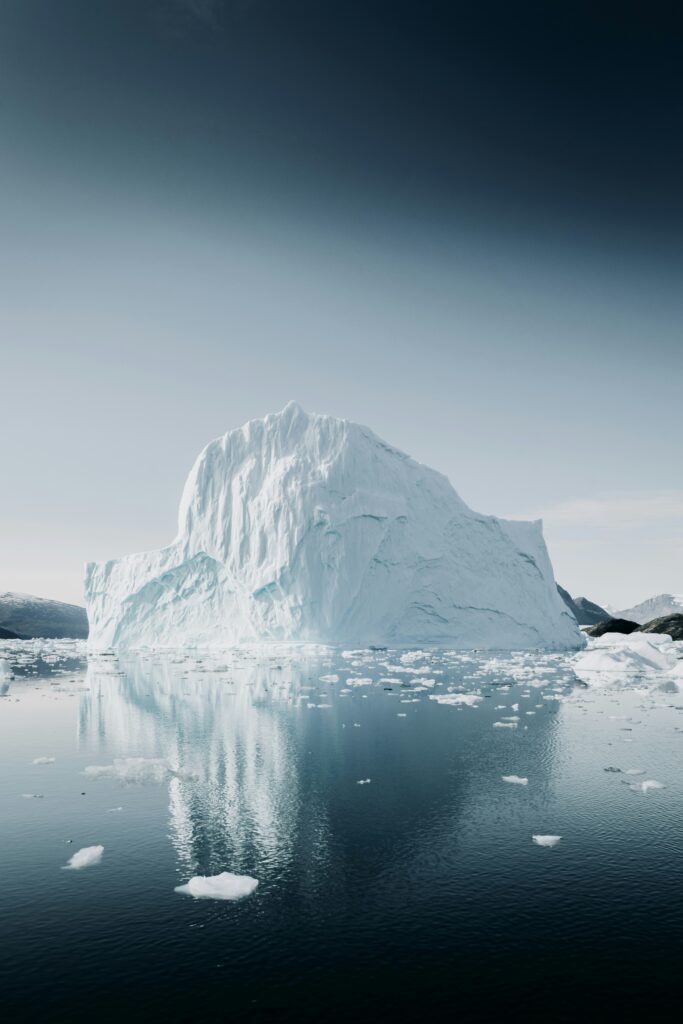In the article “Do Ice Makers Keep Ice Cold?” you’ll discover how ice makers work to not only create ice but also maintain its temperature. You’ll delve into the fascinating mechanics and design aspects that ensure your ice remains frozen, even after it’s made. By understanding the functionality and efficiency of modern ice makers, you’ll appreciate how these handy appliances keep your beverages perfectly chilled, whether you’re at home or hosting a grand party. Get ready to explore the intricate world of ice preservation and enjoy the convenience it brings to your daily life. Do you ever wonder if your ice maker is actually keeping your ice cold? It’s a question that has likely crossed your mind, especially when you peer into your ice bin and find your ice a little less frozen than you’d like. Let’s delve into this intriguing subject to uncover the truth behind ice makers and their functionality.
What is an Ice Maker?
An ice maker, integral to any modern refrigerator or standalone appliance, is designed with the sole purpose of producing ice. These devices streamline the ice-making process, ensuring you always have a steady supply at your disposal. But do they really keep the ice cold once it’s made, or does its primary function end there?
Types of Ice Makers
There are various types of ice makers, each with its unique features and performance capabilities. Here’s a closer look:
| Type of Ice Maker | Features | Uses |
|---|---|---|
| Built-in Ice Makers | Integrated within refrigerators, these are often user-friendly and require minimal maintenance. | Home kitchens, small apartments |
| Portable Ice Makers | Compact, easy to move and can be plugged in wherever there’s an electrical outlet. | RVs, small spaces, parties |
| Commercial Ice Makers | Larger, heavy-duty machines designed for high-volume ice production. | Restaurants, hotels, bars |
| Countertop Ice Makers | Small, space-efficient, and ideal for everyday use, usually found on kitchen countertops. | Home kitchens, offices |
Each type has its own advantages, and understanding these can help determine if they meet your specific ice-keeping requirements.
How Ice Makers Work
To comprehend whether ice makers keep ice cold, first, we need to understand how they work. The process, although seemingly straightforward, is intricate and involves several steps.
The Freezing Process
- Water Fill: Water is poured into the ice mold.
- Freezing Cycle: The mold is cooled, and water starts to turn into ice. This typically happens through a refrigeration mechanism involving a refrigerant.
- Harvesting: Once the water is frozen, the ice is released from the mold into the storage bin.
- Storage: This is where the real question arises – does the ice maker keep the ice cold during storage?
Temperature Maintenance
Most ice makers maintain a certain level of coldness in the storage bin, but they aren’t necessarily designed as freezers. Here’s the catch: the primary function of an ice maker is to produce ice, not to keep it frozen indefinitely.

Factors Affecting Ice Kept Cold in Ice Makers
Several factors influence how well an ice maker keeps the ice cold. It’s essential to understand these elements to make an informed decision or troubleshoot existing issues.
Insulation in Ice Makers
Insulation plays a crucial role in maintaining low temperatures. High-quality insulation means that cold air is effectively trapped, slowing down the melting process.
Ambient Temperature
The environment where the ice maker is placed dramatically affects its performance. For example, a hot kitchen versus a cool basement can result in different outcomes for the ice consistency.
Frequency of Use
How often you use your ice maker can influence its ability to keep the ice cold. Frequent use means new, freshly frozen ice is constantly being produced, which can help maintain the overall temperature in the storage bin.
Ice Bin Size
Larger ice bins can retain cold air better, simply due to their increased mass of ice. A small ice bin may struggle more in maintaining low temperatures.
| Factor | Impact on Ice Keeping Cold |
|---|---|
| Insulation | Better insulation = slower melting |
| Ambient Temperature | Cooler environment = slower melting |
| Frequency of Use | More use = more cold maintenance |
| Ice Bin Size | Larger bin = better temperature retention |
Understanding these factors can help you gauge why your ice might not be as cold as expected and take steps to mitigate any negative influences.
Enhancing Ice Retention in Ice Makers
If your ice maker isn’t keeping ice as cold as you’d like, don’t fret. There are several strategies you can employ to enhance ice retention.
Optimizing the Ice Bin
Ensuring your ice bin is insulated can help maintain lower temperatures. Some ice makers come with advanced insulation, but you can also use insulated covers or even add some pre-made ice packs to help keep the temperature down.
Placement of the Ice Maker
Positioning your ice maker in a cooler area can make a significant difference. Avoid placing it near heat sources like ovens or direct sunlight exposure to maintain an optimal cold environment.
Regular Maintenance
Frequently check and clean your ice maker. Mineral build-up and dirt can affect performance. Regular maintenance ensures the efficient operation of your ice maker, keeping ice colder for longer.
Adding Extra Freezer Packs
Extra freezer packs or reusable ice blocks can be a quick fix to keep the ice bin cooler for extended periods.
User Habits
Limiting the number of times the ice bin is opened will help in maintaining the cold air. The more you open it, the more warm air mixes with the cold, leading to faster melting.

Technological Advancements in Ice Makers
Modern ice makers have seen significant advancements, aimed at not just producing ice but also keeping it colder for longer.
Dual Cooling Systems
Some high-end ice makers now incorporate dual cooling systems, which separate the ice production from the storage, ensuring that the ice stays at a consistently low temperature even after it’s produced.
Smart Sensors
Smart sensors and thermostats that monitor the temperature inside the ice bin can trigger cool cycles if the temperature rises above the desired level.
Infrared Technology
Using infrared technology, these modern machines can detect when ice is made, and it needs to be ejected and stored properly, thus optimizing the cold retention process.
Eco-Friendly Refrigerants
Eco-friendly refrigerants not only help in freezing the water more efficiently but also in maintaining a stable temperature. This has a dual benefit of being environmentally conscious while keeping your ice at ideal temperatures.
Common Myths about Ice Makers
With so much information around, it’s easy to get caught up in common myths about ice makers. So let’s dispel some of these for a clearer understanding.
Myth 1: Ice Makers Are the Same as Freezers
Not true. Ice makers are designed primarily for ice production; freezers are built for prolonged storage. While they serve a similar purpose, their functions and effectiveness in keeping ice cold are quite different.
Myth 2: More Ice Means Colder Ice
While having more ice can help retain cold, it’s the quality of the ice maker’s insulation and the ambient temperature that play more critical roles.
Myth 3: All Ice Makers are Inherently Eco-Unfriendly
With advancements in technology, many ice makers now use eco-friendly refrigerants and energy-efficient designs, making them a viable option without excessive environmental impact.

Balancing Between Ice Production and Retention
Finding a balance is key. You want an efficient ice maker that not only produces ice quickly but also keeps it cold for as long as possible. Here are some tips:
Choose the Right Model
Depending on your usage and needs, choose an ice maker that balances production and retention. Built-in models often have better insulation compared to portable models, for instance.
Proactive Use
If you know you’ll need a lot of ice, plan ahead and produce ice in batches. Transfer it to a secondary storage that’s better insulated if necessary.
Energy Efficiency
Look for models with the Energy Star label, as these tend to use less power while maintaining efficient performance, which indirectly helps in keeping the ice colder.
Monitoring Ice Quality
Over time, you might notice a change in ice quality, indicating that your ice maker might not be performing optimally.
Clear vs. Cloudy Ice
Clear ice typically indicates that air pockets and impurities are low, suggesting optimal freezing conditions. Cloudy ice might mean the freezing process is too rapid, trapping air and impurities, or that the water quality isn’t great.
Ice Consistency
Check for consistency in ice production. If the cubes are getting smaller, melting faster, or tasting off, it could be a sign of poor performance or the need for maintenance.
Temperature Check
Regularly check the temperature of the ice bin with a thermometer to ensure it remains at a consistent, cold level.
Commercial vs. Home Ice Makers
Both have their pros and cons, and understanding these can help you in making an informed choice.
Commercial Ice Makers
- Pros: High volume, durable, often have better insulation and cooling mechanisms.
- Cons: Expensive, larger, higher energy consumption.
Home Ice Makers
- Pros: Affordable, compact, generally easier to use.
- Cons: Limited ice capacity, often not as well insulated, may struggle in hot environments.
Alternatives to Ice Makers
If an ice maker doesn’t seem like the perfect fit, there are alternatives to consider.
Ice Trays
Simple, effective, but require manual effort. They can be used in conjunction with high-quality insulated ice bins to keep your ice cold.
Ice Delivery Services
For those requiring large quantities infrequently, ice delivery can be a convenient option, though not as cost-effective in the long run.
Built-In Refrigerator Freezers
Many modern fridges come with built-in ice makers that serve dual purposes – both freezing and storage, often with good insulation.
Conclusion
So, do ice makers keep ice cold? The answer isn’t entirely straightforward. While they are excellent at producing ice quickly, their ability to keep ice cold varies and depends on several factors including the type of ice maker, its insulation quality, ambient temperature, and user habits. By understanding these nuances, you can optimize the performance of your ice maker and ensure that your ice stays as cold as you need it to be.
Remember, the key to maintaining cold ice lies in choosing the right ice maker for your needs and employing some practical strategies to enhance its retention capabilities. With a bit of mindful use and regular maintenance, you’ll enjoy perfectly cold ice every time.



